Food Behavior in Chinese Households during COVID-19: Did Age Matter?

Food Behavior in Chinese Households during COVID-19: Did Age Matter?

Do you still remember?
As things are getting back to normal now, do you still remember how and what we ate during the peak period of the COVID-19 pandemic? Some of us may have experienced quarantine while others may not have. Regardless, investigating the ways in which individuals obtained and consumed food prior to and following the pandemic can bring us intriguing findings...
Back to the early 2020,
a survey was carried out in both China and the US to specifically investigate how the pandemic has impacted household-level food-related matters in different age groups.
To start off, how did people source food?



Online/Delivery Or Pickup?
Dramatic changes happened in the source of household food purchase. large number of people starts to use various ways of online delivery purchasing.
Even the curbside pickup increase by a certain amount since shopping in the store is of high risk of getting infected.
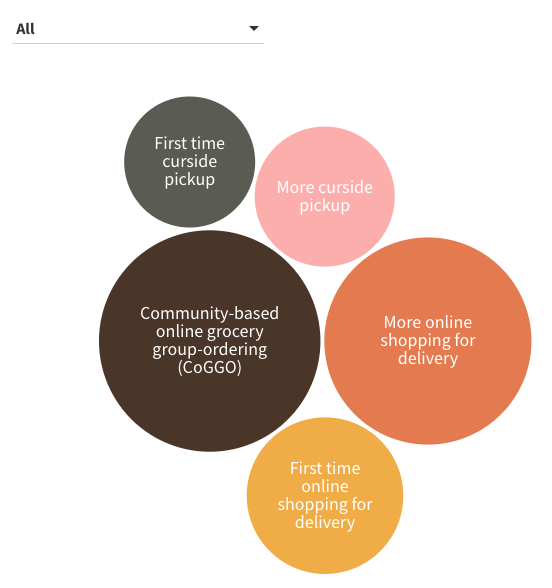
Age is a significant factor in determining online shopping preferences (p<0.001)
Group III had the largest percentage (66.3%) of individuals who indicated that they had bought food online, possibly due to their greater responsibility for procuring food in households.
Community-based online group grocery-ordering (CoGGO) was more popular among the younger age group (Group I).
Younger people tend to be more open to novel ideas and better able to adjust to new ways of obtaining food for their households.
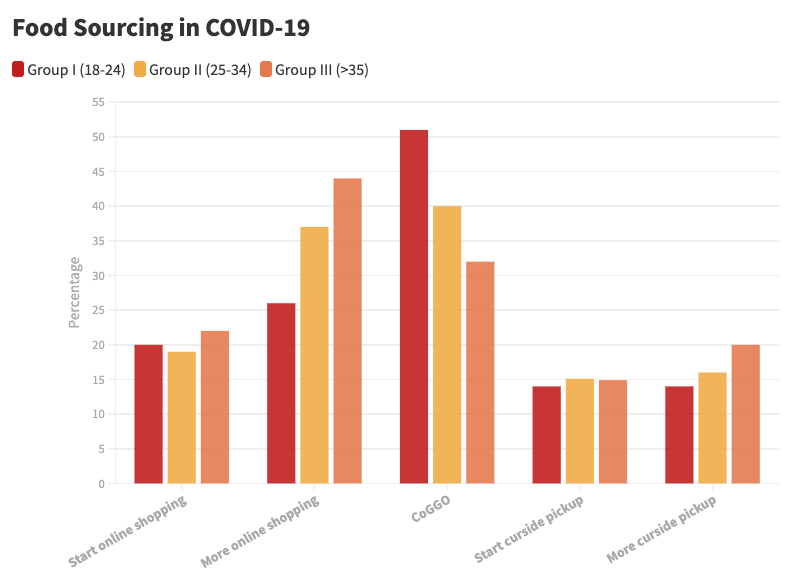
CoGGO - Community-based online grocery group-ordering
How Often?
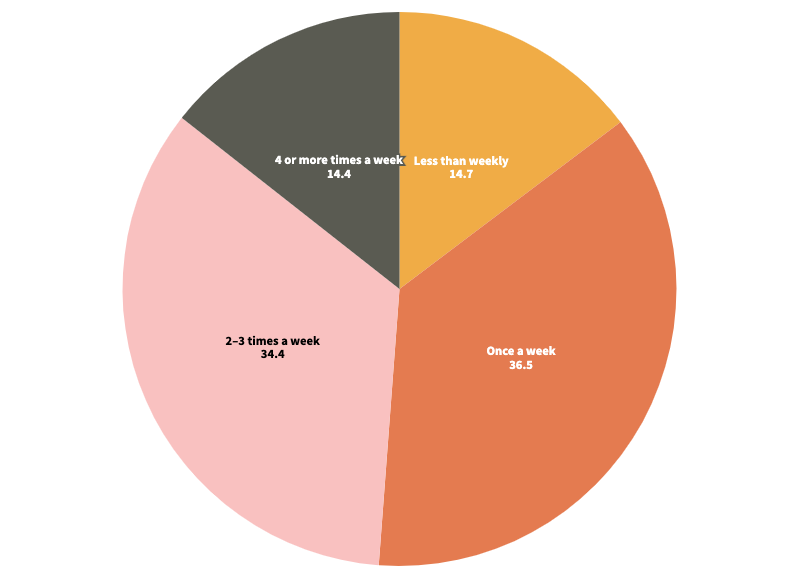
Before the pandemic, most of people go for food shopping trips 1-3 times a week on average, which contributed 71% of the population.

During the pandemic...
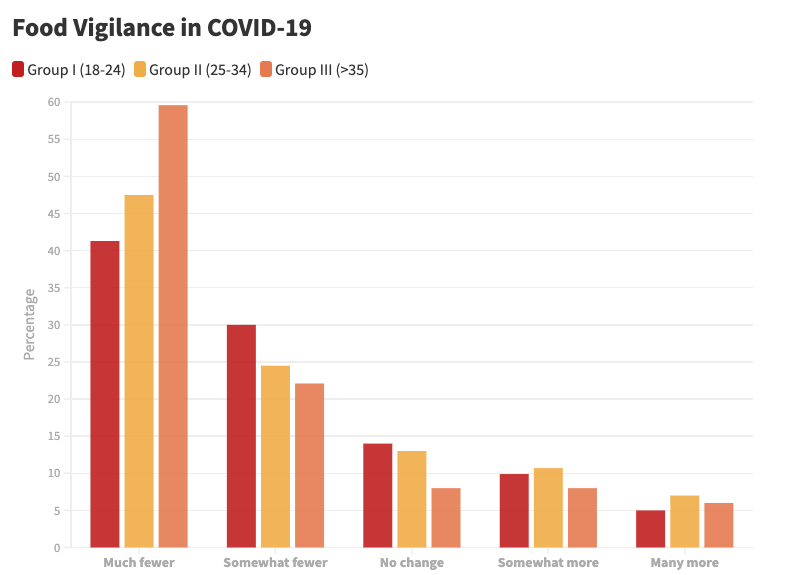
The participants indicated that they made fewer visits to physical grocery stores and instead, augmented their food procurement by relying more on online channels.
In contrast to younger participants (Groups I and II), older individuals (Group III) reported a significant decrease in the number of times they went grocery shopping while under home quarantine.

Older participants additionally indicated that they had acquired more food items than before the outbreak in necessities like vegetables, meat, rice, fruits, as well as milk and dairy products.
This suggests that older participants, in line with Chinese culture and family values, feel a greater sense of duty towards ensuring the food security of their households.
Any Food Waste?
Good news is that individuals have become more mindful of reducing food waste in the wake of the pandemic. According to the survey, approximately 40.1% of respondents reported that they wasted less food while under quarantine.
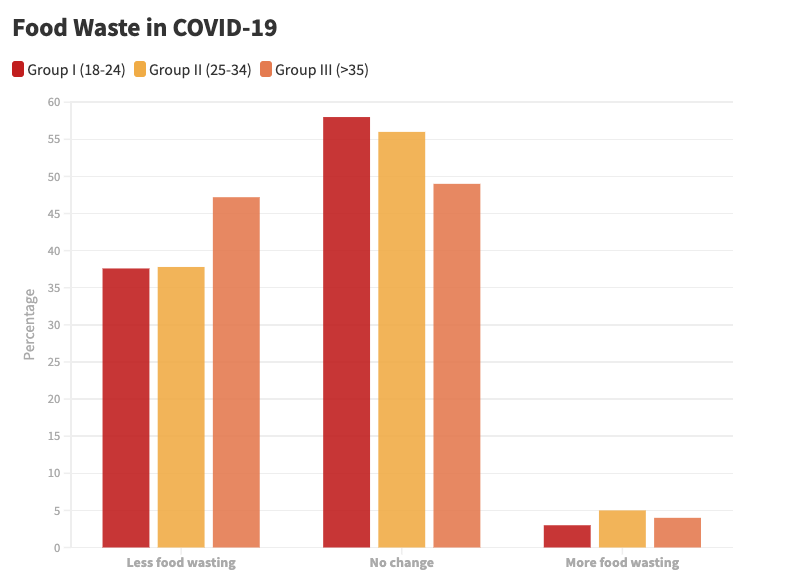
It is worth noting that food wastage appears to be strongly correlated with age, with older individuals tending to dispose of less food.

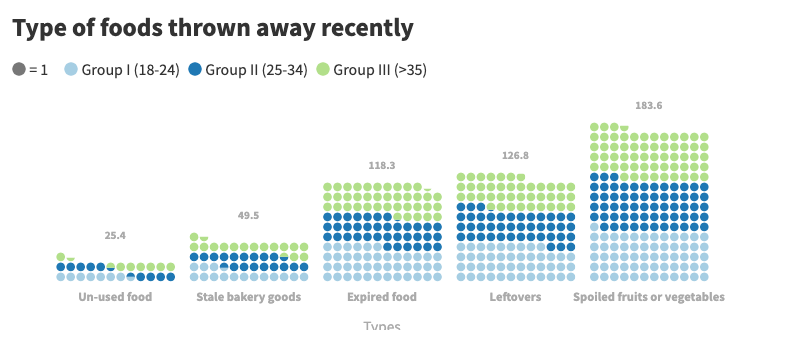
The most frequently discarded food items were spoiled fruits and vegetables, followed by uneaten leftovers from home-cooked meals, and expired food products.

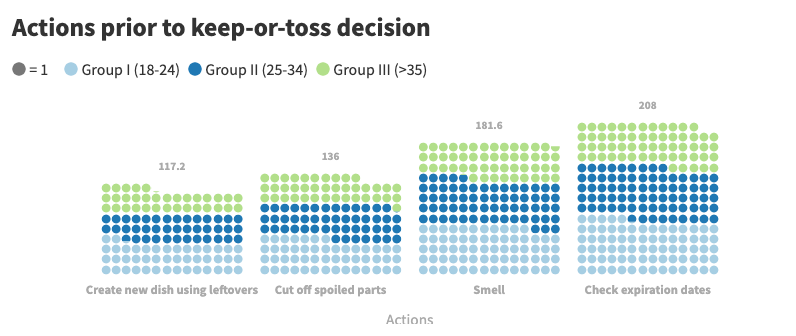
The majority of participants stated that they checked the expiration date of food products before determining whether to throw them away, highlighting the significant role that date labeling plays in shaping consumer attitudes towards food waste.
Participants frequently relied on sensory evaluations, such as smelling food items, to determine whether or not to discard them.
Many participants also stated that they either removed the spoiled portions of fresh produce or repurposed leftover food items by creating a new dish.

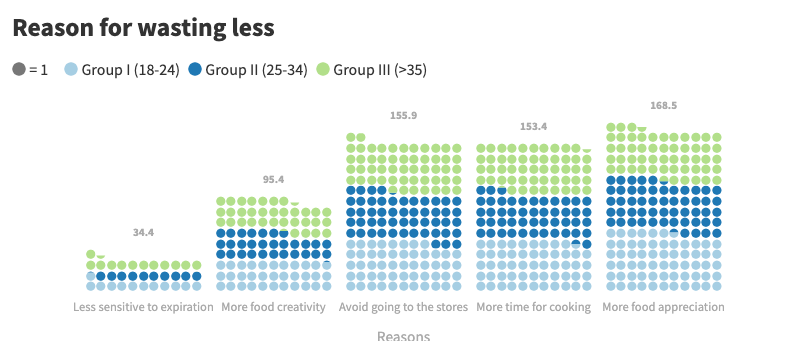
Positive changes in behavior is the main reason that led to a decrease in food waste during the COVID-19 pandemic.

Age Group Comparison
Younger people:
more positive about their perceptions of food security and the stability of the food supply.
Older people:
cooking at home more frequently and having household members cook and eat together more often than their younger counterparts.
take greater responsibility when it comes to food-related tasks in the household, which involves activities like handling and preparing food.

Conclusions
The outbreak of the pandemic expedited the growth of online grocery shopping, resulting in the emergence of CoGGO as a novel approach to procuring food for households.
Balancing the regulation of newly emerging online methods of food procurement with traditional food supply channels will present a significant obstacle for policymakers and industry leaders.
To guarantee food security in households in the future, it's essential to concentrate on establishing food supply channels that meet the requirements of older individuals, who are predominantly accountable for procuring food in households.
It's crucial to sustain the changes seen in younger generations, such as increased awareness of possible food shortages and the adoption of improved food sourcing methods.

References
Béné C. Resilience of local food systems and links to food security-a review of some important concepts in the context of COVID-19 and other shocks. Food Secur. 2020; 10.1007/s12571-020-01076-1
Si Z, Qi D, Dai N, Zhong T, Crush. “COVID-19 and grassroots community organizing in Wuhan, China” COVID-19 and food security Research Brief No. 5, Waterloo, Canada. 2020; 5:1–7.
Hanssen OJ, Syversen F, Stø E. Edible food waste from Norwegian households—detailed food waste composition analysis among households in two different regions in Norway. Resour. Conserv. Recy. 2016; 109: 146–154.
Stancu V, Haugaard P, Lähteenmäki L. Determinants of consumer food waste behavior: two routes to food waste. Appetite. 2016; 96: 7–17. doi: 10.1016/j.appet.2015.08.025
Bilska B, Tomaszewska M, Kołozyn-Krajewska D. Analysis of the behaviors of Polish consumers in relation to food waste. Sustainability. 2020; 12, 304. doi: 10.3390/foods9040379
Schanes K, Dobernig K, Gözet B. Food waste matters a systematic review of household food waste practices and their policy implications. J. Cleaner Prod. 2018; 182, 978–991.

